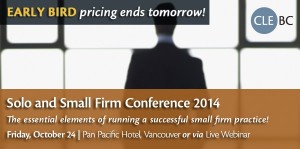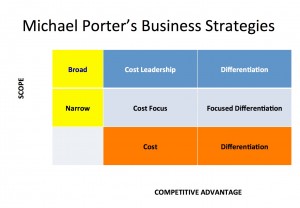♫ Boy, you’re going to carry that weight,
Carry that weight a long time
Boy, you’re going to carry that weight
Carry that weight a long time…♫
Lyrics and Music by Lennon & McCartney recorded by The Beatles.
This is a guest post from Ann Mehl and originally appeared in her Newsletter and blog under the title “The High Note“. To say that it struck a note is putting it mildly. I hope you find it to be as moving and reflective as I did. It is reproduced here with her approval and consent.
While scanning the radio in my car for a good song, I stumbled upon an interview with Paul McCartney. He was funny and engaging, so I stopped to listen for a while. He was asked about his voice, and if, at age 71, he could still sing all those old Beatles songs. His answer was honest and revealing. “Well,” he said. “I can’t hit all the high notes like I used to, but I’ve probably got better technique now, and you learn ways around that.” Some of those techniques? Changing the melody ever so slightly, letting his back up singers hit the high notes for him, or simply calling upon his audience fill in the blanks. Music legend Sir Paul McCartney has had to learn that even he has musical limitations.
This got me thinking: How much of our lives are spent trying to chase a high note that we are no longer capable of hitting? And what does this cost us in terms of health and happiness? In my own life, I know I hit a high note when I ran my first marathon at 3:26, a personal record for me. It’s unlikely I will ever do it again, and that’s okay. I’m interested in different goals now. But it can be very hard to let go of who we used to be, or who we imagine we still are. We see it all the time in professional sports: the athlete who retires, only to “unretire” six months later. The boxer who wants “one more fight” when everyone around him knows he should have quit years ago.
Most of us are not athletes or professional performers, but we do know what it’s like to chase our former glories, and to hunger for that intoxicating high note. Maybe it’s the version of ourselves that is 10 years younger, or 20 pounds lighter. Maybe it’s the earlier excitement of a new job, or the rush of a new romance. Most of us yearn for these peak experiences, and once experienced, seek to recreate them.
That’s not necessarily a bad thing, but it can lead to a lot of frustration and heartache in the present. The problem with chasing only these moments, is that they are generally very fleeting, if they exist at all. And we can miss out on some of the really great moments happening in between. Martina Navratilova said it best: “The moment of victory is much too short to live for that and nothing else.”
I knew of one serial entrepreneur who made a killing on his first venture, to the tune of almost $10 million. He went on to create several other successful companies after this, but none as big as the first. Measured against this impossible standard, he felt he was constantly failing, even when, by all outward signs he was a massive success. To his family and work colleagues, he had become a bitter pill who could not enjoy his own success. He was enslaved to the high note, in his case, some arbitrary number below which anything spelled failure. He was Sisyphus, compelled to roll an immense boulder uphill, only to become demoralized every time it rolled back down on top of him.
There are two basic roads that we can travel: one is the road to freedom, and the other is the road to tyranny. The road to tyranny is based on always hitting the high note, and a refusal to accept anything else. It enslaves us to the past, and blinds us to new opportunities in the present. After all, who are we if we can no longer hit the high note? The road to freedom, on the other hand, accepts that all things are in a constant state of flux: our bodies, our minds, our relationships. What we are able to do in our 20s and 30s is very different from what we can do in our 40s, 50s and beyond. And not only is this okay, it is natural.
At the root of all unhappiness is our refusal to accept that all things eventually must end: our youth, our beauty and eventually even ourselves. What we are really fighting against is our own mortality, and that is one battle we will never win. But like Paul McCartney, maybe we can learn some new techniques. We can accept that while a relationship has changed, it does not necessarily have to end. We can accept that while a job is no longer as exciting as it once was, it may offer its own kind of reward in the people we meet. We can accept that through age or infirmity, a parent is no longer the person we once knew, and try to develop a new connection based on who they are now.
I’m not suggesting we give up or don’t stretch ourselves, only that we don’t have to be slaves to our past successes (or failures). Graceful surrender to the here and now is always preferable to screeching, or God forbid, ruptured vocal chords. Paul McCartney may not be able to hit the high notes like he used to. All he can do is make friends with the voice he has now, and the many beautiful notes he still can sing. And when the voice cracks, or won’t go where he wants it to go, he invites the audience to sing along.
—
Thanks Ann for reminding us that unless we learn to gently acknowledge and adjust to the fact that we may not be able to hit the high notes like we used to, we will be carrying that weight a long time…
(Hat tip to Stewart Levine for originally drawing my attention to Ann’s article).
Thought for the Day: “In the end, the love you take is equal to the love you make” – Paul McCartney.
♫ I want you
Do you want me too?
I have one question
Can I help you?
Now watch me, what I do
Now thank you for coming through my drive-thru..♫
Lyrics and Music by: Julian Casablancas, Santi White, Pharrell Williams, recorded by Julian Casablancas, Santigold, and Pharrell Williams.
In the four prior posts in this series, we looked at how price is just one of seven components of the legal marketing mix. Part 2 discussed the product mix – and how changing your product mix may result in a great match between your services and the needs of the clients. Part 3 looked at who was on your team and how they deliver your services – and how this can have a big distinguishing effect on how clients view your services against the competition. In Part 4 we looked at promotion and how this can make your services stand out from the pack. In each of these posts we have looked at how each of these components helps distinguish your services from the competition; services that are distinguishable are priced differently, as they are no longer comparable with the competition.
In this post we are looking at yet another component of the marketing mix – namely the place where you deliver your services. Just consider the range of physical office configurations – from storefront offices on main street to walkup offices to Class A office space in a gleaming skyscraper. Each one of these sends an unwritten message to a potential consumer of legal services. Furthermore, you can practice as a solo, in an office sharing arrangement, an associate or a partner of a firm, large or small. Lawyers can maintain branch offices in the suburbs, in another town, province or state or even another country or continent. You can be a travelling lawyer who attends clients at their places of business, home, hospital, care facility, union hall or even a Starbucks. You can offer handicap access or after-hour access. Lastly but certainly not least, you can maintain a virtual office, using internet technologies to meet, share, collaborate and meet the needs of your clients who could be down the street, across town, in a distant city or even across the world. The range of possibilities are unbounded.
Indeed, bold lawyers have envisioned practising in ways that break the familiar constraints. Axess Law in Ontario has launched law offices that are embedded within Wal*Mart stores in Ontario and offer home, family, business services, legal contracts and notary services in an affordable and approachable context.
The range of offices and services that can be offered from different locations to meet client needs is as open and wide as your imagination. Perhaps one day a lawyer will open an office where a client can receive legal advice right in their car…and the lawyer would say…”Can I help You?” and then conclude with: “Thank you for coming thru my drive-thru…”
(cross-posted to tips.slaw.ca)
♫ That’s why I fell for (the leader of the pack)…♫
Lyrics and Music by: George “Shadow” Morton, Jeff Barry and Ellie Greenwich, recorded by The Shangri-Las.
In the three prior posts on lawyers and pricing, we have looked at how price is only one part of the 7 components of the legal marketing mix. Part 2 discussed the product mix and how you can change your legal product mix to better meet the needs of your clients in a way that distinguishes your services from those of the competition. Part 3 examined how the people on your team can have a big impact on how your services are delivered. In fact, in Good to Great, Jim Collins said that the most important factor applied by the best companies is that they first of all “Got the right people on the bus, and the wrong people off the bus.” In this post we are exploring how promoting your business can be a distinguishing feature, setting your business up as being different from the competition…allowing you to price your services differently from the competition.
Think about all the different ways that your clients learn about your services. Certainly word-of-mouth is the gold standard of referral marketing, but not everyone who is a client in your firm came in the doors as a result of a personal referral. When it comes to marketing your practice, the one truth is that whatever works today will stop working at some time in the future for reasons that you might never know. Accordingly you need to change up your promotional or marketing activities and keep trying new things. Small changes can have big effects.
Social media is all the rage today and for good reason. Facebook has now reached 1.3 billion people – and that doesn’t include anyone in China! LinkedIn and Twitter are the other members of the “big three” social media networks. Have a look at your Facebook page, your LinkedIn profile and your use of Twitter. You can choose to not be on any of these (after all you can choose how to market your firm and your practice) and if these wouldn’t resonate for you or your clients ..fair ball. What is worse is being there but not having updated anything for some time. This indicates lack of commitment and follow-thru. Same goes for a blog – I personally find blogging to be one of the easiest and more effective ways for a young lawyer to establish themselves and their expertise in the market, if done consistently and well. Combine a blog with your thoughtful use of twitter on developments in your legal area of choice and you can become known as an authority in short order. For a great overview of how Canadian lawyers are blogging see the Clawbies website – the Canadian Legal Blog awards. You can be as creative as your imagination will take you..provided you still stay within the marketing ethics of your jurisdiction.
If social networking is not for you, there are a host of more traditional marketing methods. In person presentations and webinars are one way to get known and demonstrate your knowledge of your area of practice. Financial institutions are always putting on presentations. If writing is your thing, then offer to do a regular column in a local or community newspaper (you can then reuse these articles in a blog or newsletter). You can clearly show your involvement and interest in local affairs, schools, sporting events, churches and other organizations and help them – thereby building your presence in the community.
Whatever you do, try to ensure that your marketing makes you stand out from the pack. After all that is its purpose – to show that you are different from the rest. You want your clients to have fallen for the leader of the pack.
(cross-posted to slaw tips.ca)
♫ I only need to tell myself
See what the future holds… ♫
Lyrics, music and recorded by S.P.Y.
Just a note that the 2014 Solo and Small Firm Conference early bird rate ends tomorrow…!!
This is a CLE-BC conference and we have worked quite hard on the content and the speakers. This is for anyone running or in a solo or small firm practice or thinking of launching one.
This is the latest in a series of Solo and Small Firm Conferences that have been hosted by CLE-BC. It only comes around every 2 years.
We have outstanding speakers including the Past President of the CBA Fred Headon doing the lunch keynote on the implications of the CBA Futures Report for solo and small firms (by Skype!).
You can attend in person or virtually.
Topics include Business School for Lawyers – what they didn’t teach you in Law School; Managing the Finances – Making the Numbers Work, Law Office Management and Technology, Marketing Ethically, Dealing with the Self Represented and Freeman on the Land, Solo and Small Firm issues and a guest presentation by the founders of the Axess Law Firm in Ontario – who have ’embedded’ a law practice inside a number of Wal*Mart stores in Ontario.
This is a fresh look at solo and small firm practice…and an exciting one.
As the conference chair, I welcome you to the conference and I am looking forward to seeing you all there. Come and see what the future holds!
♫ I want to be part of the solution
Can you use me to lead a revolution?
I want to be part of the solution… ♫
Music, Lyrics and recorded by: Jonah33.
The issues facing the profession have been set out by many: from Richard Susskind as documented in his many books, to Madam Justice McLachlin, who has said:
“Timely, effective access is the most pressing issue facing Canada’s justice system, says Supreme Court Chief Justice Beverley McLachlin.
Many people have given up on seeking justice through the courts, deterred by the often expensive and time consuming process, she said.
…
“We do need some new approaches…we need to get behind the solutions,” she said.
The problems facing the justice system and the legal profession are well set out. The issue is where are the solutions to come from? More importantly, where will the leadership come from?
The Canadian Bar Association has now published its comprehensive August 2014 report, Futures: Transforming the Delivery of Legal Services in Canada. This report is the culmination of two years of consultation, original research and analysis on the future legal marketplace in Canada, and includes a series of recommendations on where and how the profession can transform itself. (See more at: http://www.cbafutures.org/reports#sthash.NMcwadWx.dpuf)
The hardest issue, as I see it, will be in implementing the recommendations that have been brought forward. Implementation of change is always the hardest part of any process. Here the law schools are facing a critical juncture: do they help lead the change to meet the new challenges – or – do they stand in the way of change?
In an article in The New Republic entitled “How to Fix Law School” (http://www.newrepublic.com/article/113983/how-fix-law-school-symposium) Mike Kinsley says:
“When you graduate, you should be prepared to pass the bar. The discovery that everything you have crammed into your head for three years has no relevance at all, and you have to master a whole new curriculum in just a few weeks for the bar exam, is dispiriting.
It’s absurd that you can graduate from law school without ever seeing a real client. Some clinical courses ought to be mandatory. Trainee doctors start seeing real patients within a year and a half. Trainee lawyers can go three, and graduate, without ever touching a client. And, let’s be honest, the training of your doctor is more important.”
I think law schools need to lead the change that we wish to see in the profession. It all starts here, from the training of lawyers to practice law (including training on issues such as practice management, actually running a business and using legal technology) to how to manage clients and actually do a conveyance, an incorporation or a decently drafted will. We need law schools to think differently.
Most of all, we need law schools to teach law students to be leaders who can step up and continue this process of change in order that the legal profession remains a strong, independent profession and continues to serve the needs of the community.
We need leadership in the profession and this training must start in law school. Law schools need to fully embrace being part of the solution in leading the revolution. In my view we don’t need any more law schools in this country that train lawyers in the old ways of doing things. What we need are the existing law schools to produce graduates that are going to be leaders in moving the profession forward with new approaches, new technologies and new ways of thinking – we need law schools to be part of the solution.
(Article has been updated. The original was published in CBA’s publication BarTalk).
♫ Well, rave on it’s a crazy feeling
And I know it’s got me reeling
I’m so glad that you’re revealing your love for me…♫
Lyrics and music by: Shaun Ryder, Paul Richard Davis, Mark Philip Day, Paul Anthony Ryder, Gary Kenneth Whelan, recorded by Buddy Holly.
In the prior two posts on lawyers and pricing, we have been discussing the issue that price is but one part of the 7 components of the legal marketing mix. Part 2 discussed the product mix and how you can change your legal product mix to better meet the needs of your clients in a way that distinguishes your services from those of the competition. In this post we are exploring how important the people who deliver your legal services are and how this can be a distinct competitive advantage.
All of us have experienced situations where your first contact with a business is with someone who just makes you feel like looking after you is the most important thing for them to do in their day. I had that experience today – I called a law firm and spoke to an assistant who, when I asked to speak to her principal, said in the most caring voice: “Well, he isn’t in his office right now but let me go out and round him up for you.” This was my very first contact with this firm and this wonderful lady didn’t know me from Adam. The way she made me feel was simply amazing. She made me feel valued and important. I recognized her exceptional people skills and thought about how she was a tremendous asset to the firm.
In Good to Great, Jim Collins said that the most important factor applied by the best companies is that they first of all “Got the right people on the bus, and the wrong people off the bus.” In other words, your ability to select, recruit, train and retain the best people with the skills and abilities to do the job right is more important than everything else put together.
The Spectacled Marketer says:
If a customer feels their expectations of your business are exceeded, then the chances of a referral are exponentially increased because their loyalty to your company is exponentially increased as well!
You need to strive for your clients to feel exceptionally satisfied so that they rave about your services. How do you exceed your client’s expectations? The first step is …hold on now…ask them! Yet lawyers and law firms *shudder* at the thought of asking clients three simple questions:
- What did they like about the firm’s services,
- What didn’t they like, and
- How could the firm firm do it better.
If you find out that there is someone on your bus that shouldn’t be there…you have a decision to make. If you find out that you have someone on your bus who is simply exceptional and is a tremendous asset to your firm, make sure you recognize and reward them accordingly!
In considering the marketing of your practice, consider how the people in your business can either make your clients rage on, feel indifferent, feel satisfied or preferably, rave on about your services. Your client service can be a strong distinguishing factor as compared to your competition. In terms of your marketing mix, strive for having very satisfied clients showing their “love by raving on about you!”
(cross posted to www.tips.slaw.ca)
♫ Keep moving, never stopping sharks
Keep moving…♫
Music, lyrics and recorded by Further Seems Forever.
In the first column in this series we dealt with the issue that price is but one part of the 7 components of the legal marketing mix. Unfortunately many lawyers (and clients) tend to overly focus on price and not appreciate the other 6. The theme of this post will be to look at the product mix and the role that it plays in marketing (and pricing!) of legal services.
One law firm is different from another in terms of the mix of services that they can provide. My colleague and friend Bob Denney produces a “What’s Hot and What’s Not” report several times a year that I repost on here on my blog Thoughtfullaw.com with his kind permission. This report shows what services are in demand, what are staying neutral and which are declining. The importance here is that if you can be nimble, you can change your mix of legal services. Staying with the same mix of services can result in stagnation. In fact, Woody Allen in one of his movies once said:
“A relationship, I think, is like a shark, you know? It has to move constantly move forward or it dies. And I think what we got on our hands is a dead shark”
The one thing that you don’t want to be as a law firm is a dead shark.
So survey your clients – do external reviews of what services are in demand, look at what industries are on the upswing in your area and think about how you can provide needed legal services to them. Compare your marketing mix of services to your competitors and see how you stack up. Eventually what you are doing will grow old in the eyes of the consumer – you need to change things up – complacency is the enemy of success.
If you can offer a unique mix of services that are more closely aligned to the needs of your clients, then you have moved from competing solely on price to being able to distinguish your services from those offered by the competition and show to the clients that you are doing a better job in terms of meeting their needs than the competition. The clients could say “Yes we could move to Dewey Gottem & Howe, but they don’t do what Werk, Worke and Wourke do for us…” You have moved from competing on price to competing based on the perceived value of your services from the viewpoint of the client. You have become a moving, never stopping shark…
♫ Zoom Zoom Zoom ♫
A Capoeira song performed by Jibril Serapis Bey.
When it comes to legal services, it seems that many law firms see price as the sole basis for competition. However from a marketing perspective, price is but one of seven criteria that make up the ‘marketing mix’ for services. Since legal services are ‘intangible economic goods’ lawyers have to sell the perceived benefits of their services and see how they match up against the needs of the clients. All other things being equal, clients evaluate services on price. But this assumes that you are delivering commodity-like services that are largely indistinguishable from those offered by the competition.
If you can distinguish your services from the competition and come closer to meeting the discerned needs of the client as compared to the competition, you are now engaged in a differentiation marketing strategy. This is based on Michael Porter’s work at Harvard Business School.
From this matrix, you can see that there are two major determinants of how you market your practice. The first is whether you appeal to a large target market or a smaller one. The second criteria is whether you choose to compete on price or on differentiating or distinguishing your services from the competition. The focused differentiation strategy seeks to market niche legal services to a target market. There is another factor at work here. Distinguishable legal services have a higher margin as compared to cost-focused strategies.
As you start to think about how to distinguish your services from those of the competition you move from thinking about the ‘reference value’ of your services (your price compared to the price of competing services) to the ‘differentiated value’ of your services (how the quality and method of delivery of your services compare to the competition).
When you start thinking of how this is done in other markets, for example in the automobile market, you see that autos can take you (and others) and transport them to new locations – that is their function and on this level they are commodities. Every auto sold does this. What distinguishes one auto to another can be neatly summed up in the phrase used by Mazda: “Zoom Zoom”….
In subsequent columns we will explore each of the 7 components in the service marketing mix and what they mean for lawyers.
♫ All of these lines across my face
Tell you the story of who I am
So many stories of where I’ve been
And how I got to where I am
But these stories don’t mean anything
When you’ve got no one to tell them to
It’s true… I was made for you
Oh yeah, well it’s true… that
I was made for you…♫
Lyrics and music by Phillip John Hanseroth, recorded by Brandi Carlile.
The beginning of September is always the start of the new year for me. Perhaps it was so many years spent in school and the inevitable association with the start of the newly-minted school year. Perhaps it is coming back from a summer vacation refreshed and invigorated and with new energy for projects. Perhaps it is because I have been talking to many people who have plans for when they get back in September in terms of branding and setting a new strong strategic direction for their firm.
Either way, I believe that September is a wonderful time to refocus, regroup and decide the future direction of your practice. What changes would you like to see? Over time law firms can lose their focus on their core services – what do they do best. They can also lose touch with their core values and their strategic direction as they take on new files and clients that pull them in new directions. September is a perfect time to sit back with your colleagues and think about where the firm is going. Do you wish it to explore new opportunities? Or are you being pulled into areas that no longer represent the reasons you formed the firm in the first place? What is gnawing on you about the firm? What would you like to change from both a firm-wide and personal perspective? Start a list..and have your colleagues do the same – and arrange a time (on a weekend) to hone in on all this and come to a consensus on where all of you would like to go.
Come together and discuss the firm..its direction, focus, what makes it special and distinct – and what should be the future direction of the firm. What is your story? Have you been drawn away from the clients, activities and associations that drew all of you together in the first place? What is your marketing focus for the next while? What would you like to change regarding the management of the firm? What about technology? Have you fallen a bit behind in this area and need to incorporate plans for upgrades and new ways of doing things? Are there categories in the finance area that you would like to tighten up, such as the collection of old accounts receivable and the tightening up of credit extended to clients? How about looking at your budget and seeing if the expenses in the group “we have always been paying this” should be looked at again if for no other reason to see if there are other vendors who might be less-expensive?
Personally I think one of the important measures is whether you have remained a ‘client-focused firm’. My late colleague and friend Milt Zwicker’s acid test was whether what was done in the firm provided value to the clients – or not. If not he would change or modify the policy or procedure so that it benefitted clients as much as possible.
I think focusing on the story of the firm and how it carries you into the future is also important. This is the culture, the invisible bond that draws all of you together and forms the backbone of the belief system of the firm. Organizations can change their culture and focus, but the story is the glue that connects the past with the future and tells why you are where you are. It is important to connect with the story of the firm, since after all, the firm was made for you to be able to provide value and meaning to your clients.
(cross posted to tips.slaw.ca)
♫ Through the fire and the flames we carry on! ♫
Lyrics and music by: Herman Li, ZP Theart, Sam Totman, Vadim Pruzhaniov, recorded by Dragonforce.
Jo DeMars, of NetNeutrals (www.netneutrals.com) spoke at the 2014 Online Dispute Resolution Forum at Hastings College of Law at the University of California in San Francisco. This post is based on her most excellent presentation on Wednesday June 25, 2014. While her comments were presented in the context of resolving disputes that arise in e-commerce, her advice applies to virtually any consumer complaint, including client complaints regarding legal services.
She stated that most, if not all, people who have a complaint regarding a product or services are looking for five ‘psychological currencies’ from the provider. These are:
- They want a chance to tell their story;
- They are looking for a reasonable explanation of what went wrong;
- They are looking for assurance that their complaint will be dealt with;
- They wish to be thanked for their business; and
- They hope to receive an apology.
Her advice is that any provider should not hesitate to offer as many of these psychological currencies to people who are unhappy with your services. Why? Simply, it costs much more money to attract a new client vs. the cost to keep an existing client.
She explained that people who are feeling caught in this process typically go thru the same process: First they Feel; then Think, and lastly they Do/Behave.
She stated that when clients are feeling strong emotions, they are incapable of hearing you. You need to take care of the emotions before you can take care of the problem.
Accordingly she advises keeping calm. At the outset, your tone is everything and sets the stage for all that follows. Anger defusion is job #1. Once that is taken care of then the client is moving into a mindset where they can start dealing with the issues at hand.
She stated that many individuals or businesses hesitate in offering an apology. Jo stated that they should take time to master the Art of the apology:
- Clearly and completely acknowledge the problem
- Offer an effective explanation
Be honest with your clients and in particular, offer an honest apology to the client for how things transpired and the effect that this has had on them. Just hearing that a person or organization truly regrets what has happened to someone is a powerful message to help resolve a client complaint.
She also stated that it is important for the person or organization to tell the appropriate story. There are several components to this:
- own the problem,
- find allies if possible,
- take responsibility for making it right,
- follow thru, and
- tell the final chapter.
Her final advice was taken from firefighters: Run thru the flames – not away from them. It is easier and better to run to the problem thru to the other side than to run away from them.
(published concurrently with www.slawtips.ca)





























